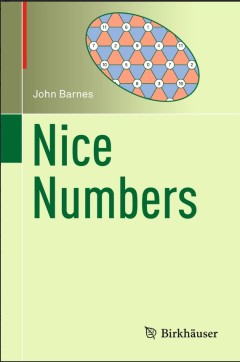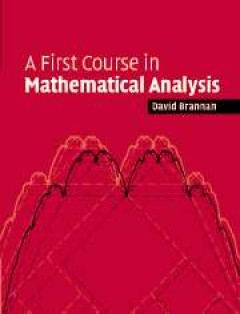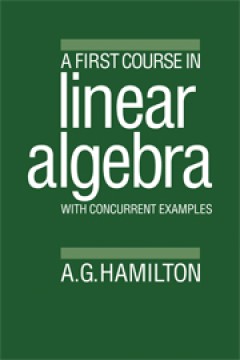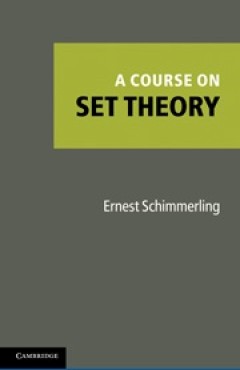Filter by

Treks into Intuitive Geometry The World of Polygons and Polyhedra
This book is written in a style that uncovers the mathematical theories buried in our everyday lives such as examples from patterns that appear in nature, art, and traditional crafts, and in mathematical mechanisms in techniques used by architects. The authors believe that through dialogues between students and mathematicians, readers may discover the processes by which the founders of the theo…
- Edition
- -
- ISBN/ISSN
- 978-4-431-55843-9
- Collation
- -
- Series Title
- -
- Call Number
- -

The Fractal Dimension of Architecture
Fractal analysis is a method for measuring, analysing and comparing the formal or geometric properties of complex objects. In this book it is used to investigate eighty-five buildings that have been designed by some of the twentieth-century’s most respected and celebrated architects. Including designs by Le Corbusier, Eileen Gray, Frank Lloyd Wright, Robert Venturi, Frank Gehry, Peter Eisenma…
- Edition
- 1
- ISBN/ISSN
- 978-3-319-32426-5
- Collation
- XVII, 423, 202 b/w illustrations
- Series Title
- Mathematics and the Built Environment
- Call Number
- -

Early Geometrical Thinking in the Environment of Patterns, Mosaics and Isomet…
This book discusses the learning and teaching of geometry, with a special focus on kindergarten and primary education. It examines important new trends and developments in research and practice, and emphasizes theoretical, empirical and developmental issues. Further, it discusses various topics, including curriculum studies and implementation, spatial abilities and geometric reasoning, as well …
- Edition
- -
- ISBN/ISSN
- 9783319442716
- Collation
- VII, 50 halaman
- Series Title
- ICME-13 Topical Surveys
- Call Number
- 510 SWO e

Coupled Multiscale Simulation and Optimization in Nanoelectronics
Designing complex integrated circuits relies heavily on mathematical methods and calls for suitable simulation and optimization tools. The current design approach involves simulations and optimizations in different physical domains (device, circuit, thermal, electromagnetic) and in a range of electrical engineering disciplines (logic, timing, power, crosstalk, signal integrity, system functiona…
- Edition
- -
- ISBN/ISSN
- 9783662466728
- Collation
- -
- Series Title
- -
- Call Number
- 510

Nice Numbers
In this intriguing book, John Barnes takes us on a journey through aspects of numbers much as he took us on a geometrical journey in Gems of Geometry. Similarly originating from a series of lectures for adult students at Reading and Oxford University, this book touches a variety of amusing and fascinating topics regarding numbers and their uses both ancient and modern. The author informs and…
- Edition
- 1
- ISBN/ISSN
- 978-3-319-46830-3
- Collation
- XIII, 329
- Series Title
- -
- Call Number
- -

A First Course in Mathematical Analysis
Mathematical Analysis (often called Advanced Calculus) is generally found by students to be one of their hardest courses in Mathematics. This text uses the so-called sequential approach to continuity, differentiability and integration to make it easier to understand the subject.Topics that are generally glossed over in the standard Calculus courses are given careful study here. For example, wha…
- Edition
- -
- ISBN/ISSN
- 9780511803949
- Collation
- -
- Series Title
- -
- Call Number
- -

Transitions in Mathematics Education
This book examines the kinds of transitions that have been studied in mathematics education research. It defines transition as a process of change, and describes learning in an educational context as a transition process. The book focuses on research in the area of mathematics education, and starts out with a literature review, describing the epistemological, cognitive, institutional and socioc…
- Edition
- -
- ISBN/ISSN
- 978-3-319-31622-2
- Collation
- -
- Series Title
- -
- Call Number
- -

A First Course in Linear Algebra With Concurrent Examples
This is a short, readable introduction to basic linear algebra, as usually encountered in a first course. The development of the subject is integrated with a large number of worked examples that illustrate the ideas and methods. The format of the book, with text and relevant examples on facing pages means that the reader can follow the text uninterrupted. The student should be able to work thro…
- Edition
- -
- ISBN/ISSN
- 9780511565731
- Collation
- -
- Series Title
- -
- Call Number
- -
Transactions on Engineering Technologies International MultiConference of En…
This volume comprises selected extended papers written by prominent researchers participating in the International MultiConference of Engineers and Computer Scientists 2015, Hong Kong, 18-20 March 2015. The conference served as a platform for discussion of frontier topics in theoretical and applied engineering and computer science, and subjects covered include communications systems, control th…
- Edition
- -
- ISBN/ISSN
- 978-981-10-0551-0
- Collation
- -
- Series Title
- -
- Call Number
- -

A Course on Set Theory
Set theory is the mathematics of infinity and part of the core curriculum for mathematics majors. This book blends theory and connections with other parts of mathematics so that readers can understand the place of set theory within the wider context. Beginning with the theoretical fundamentals, the author proceeds to illustrate applications to topology, analysis and combinatorics, as well as to…
- Edition
- -
- ISBN/ISSN
- 9780511996351
- Collation
- -
- Series Title
- -
- Call Number
- -
 Computer Science, Information & General Works
Computer Science, Information & General Works  Philosophy & Psychology
Philosophy & Psychology  Religion
Religion  Social Sciences
Social Sciences  Language
Language  Pure Science
Pure Science  Applied Sciences
Applied Sciences  Art & Recreation
Art & Recreation  Literature
Literature  History & Geography
History & Geography